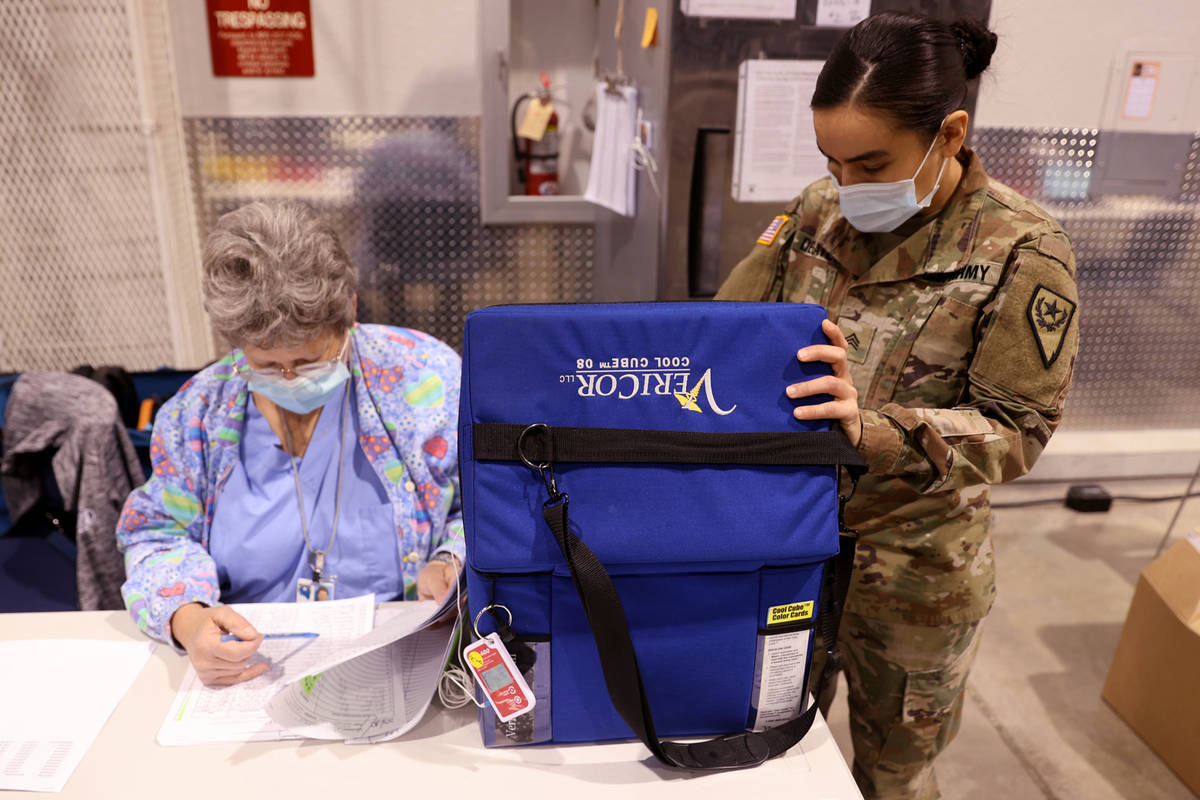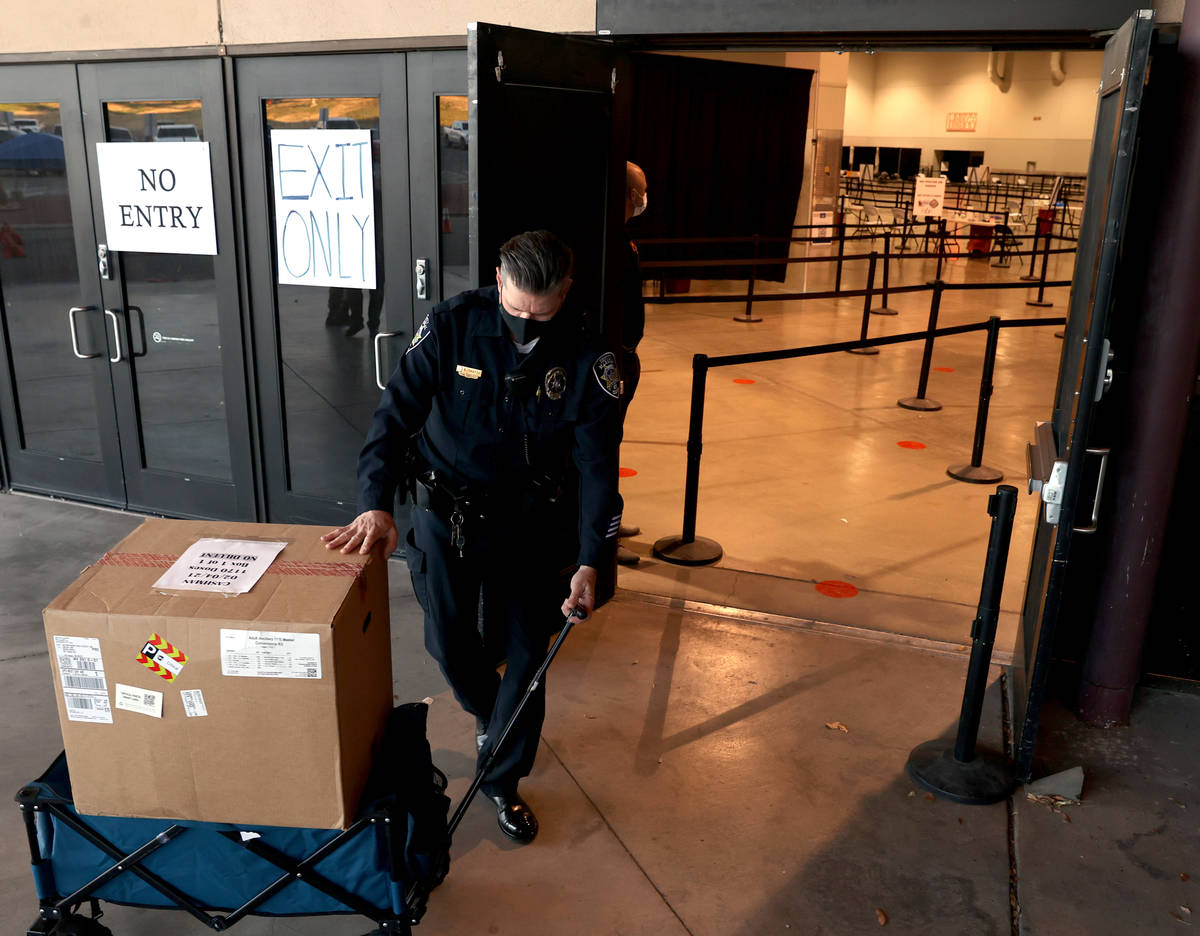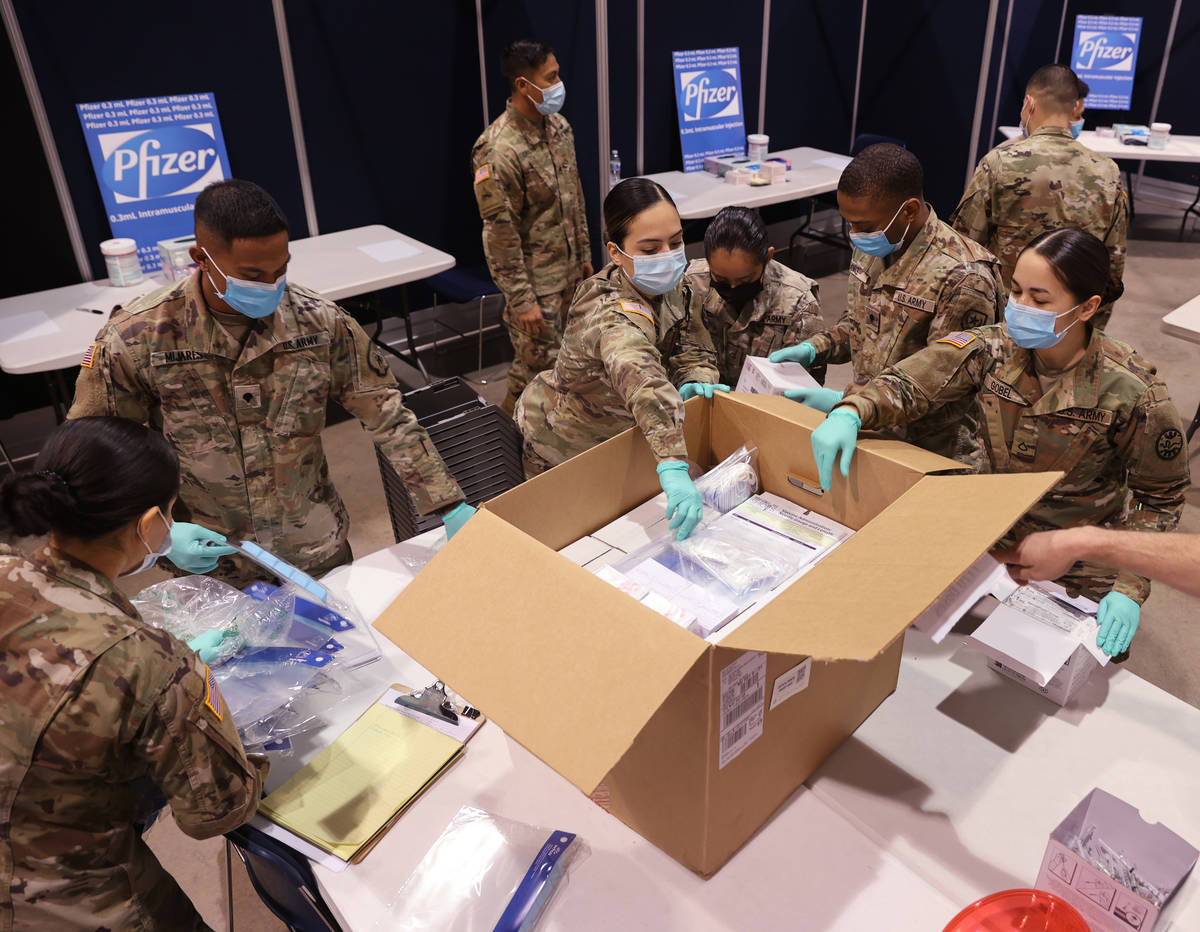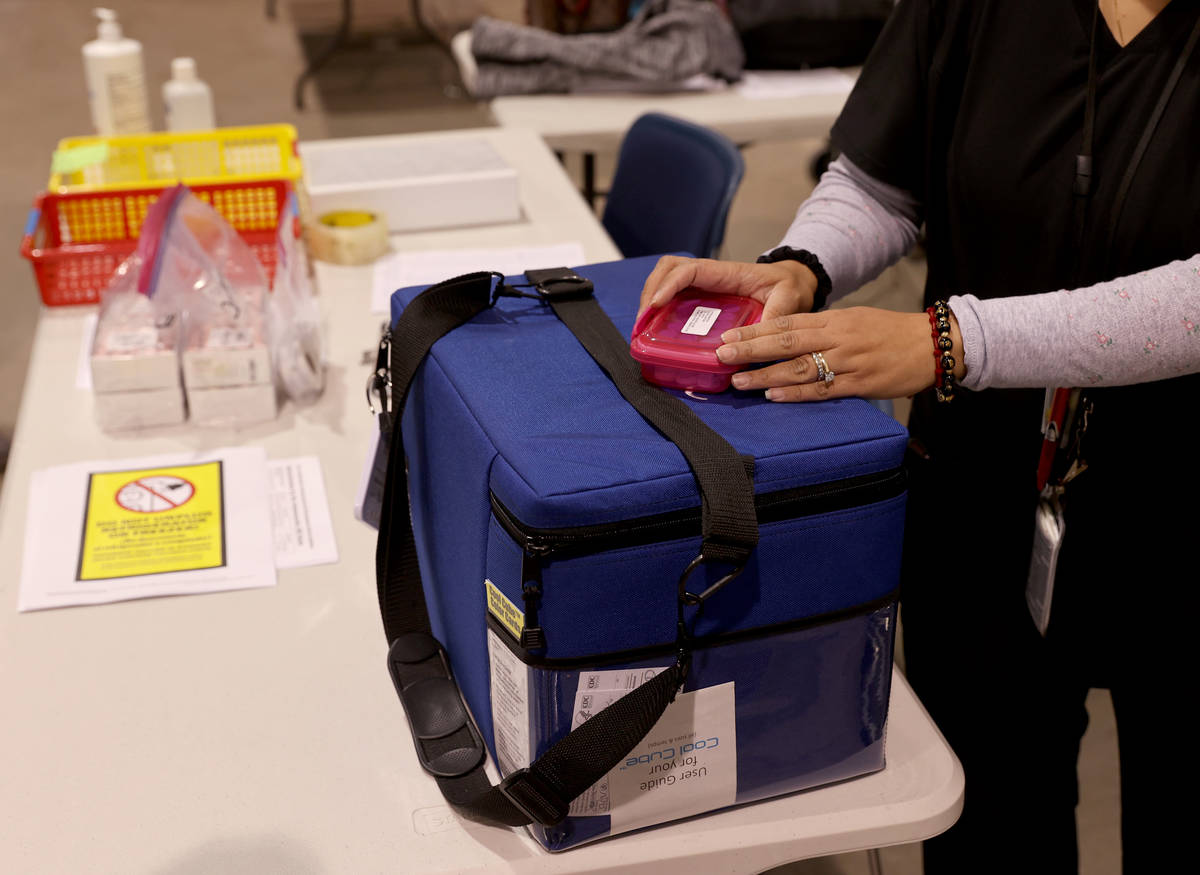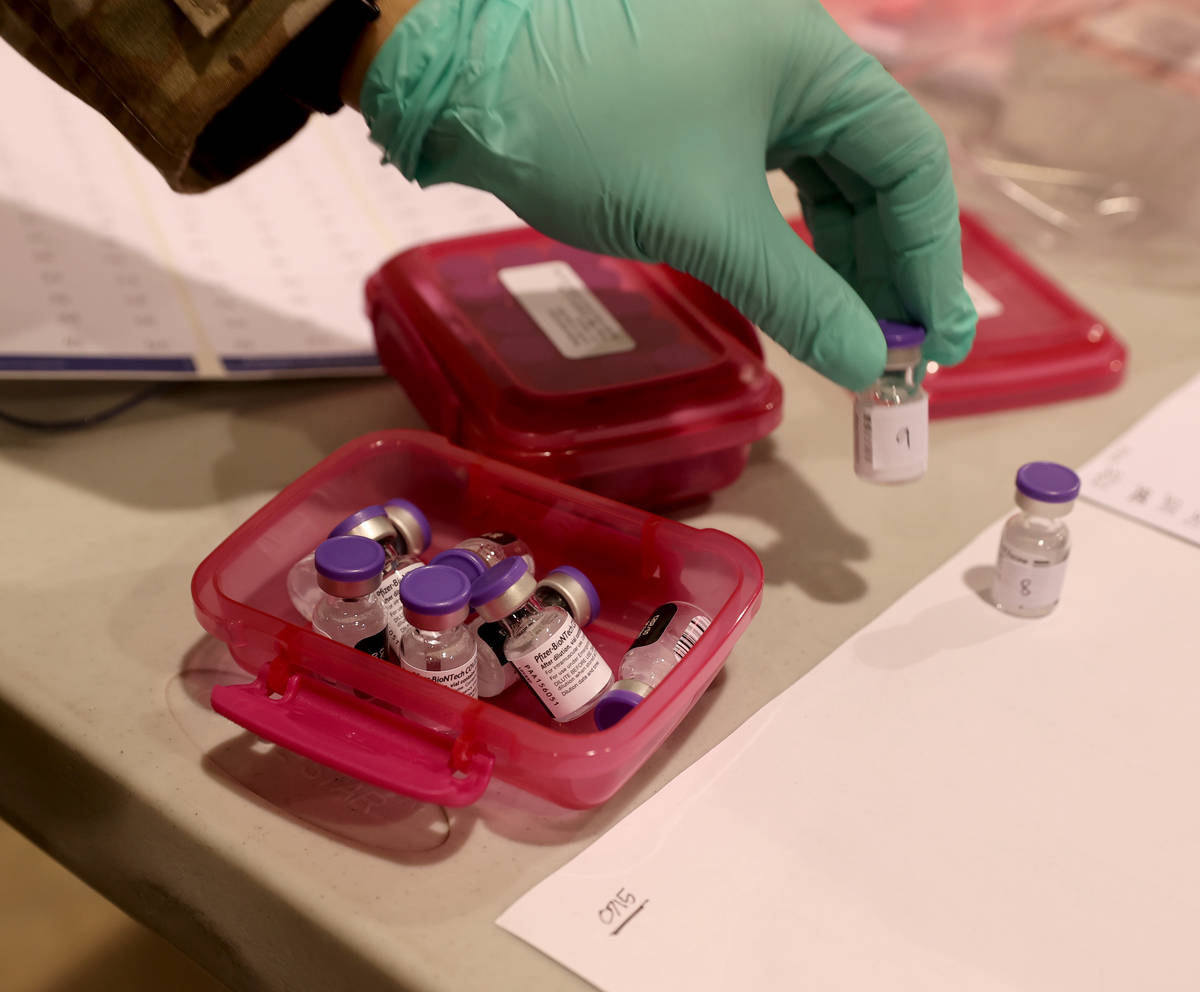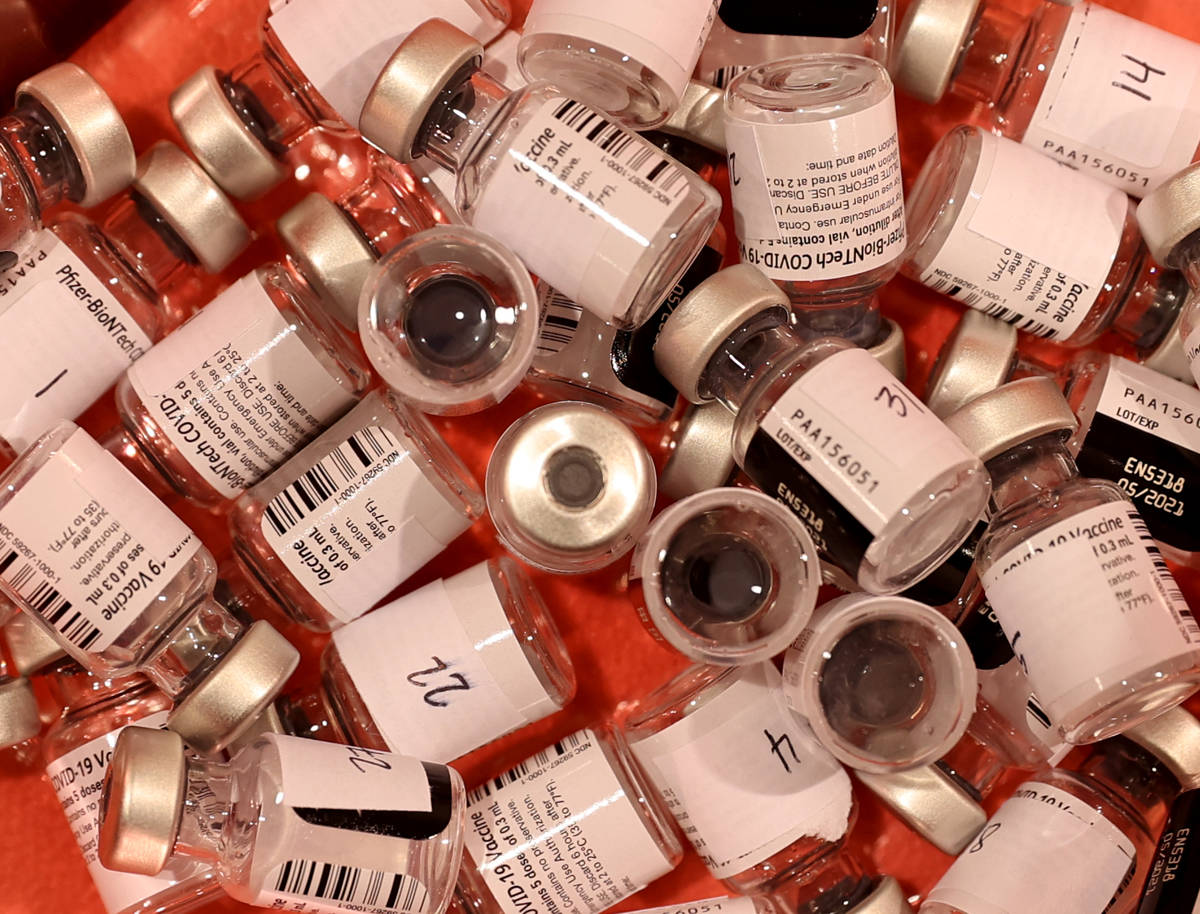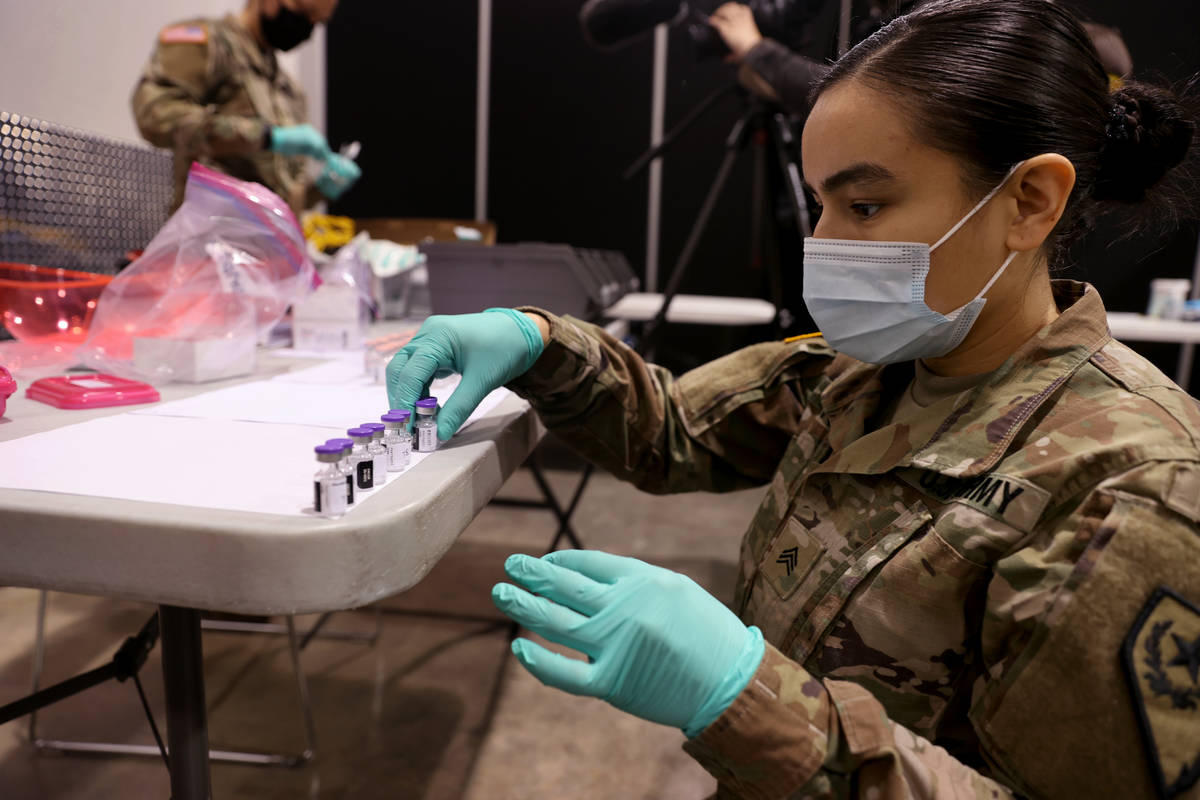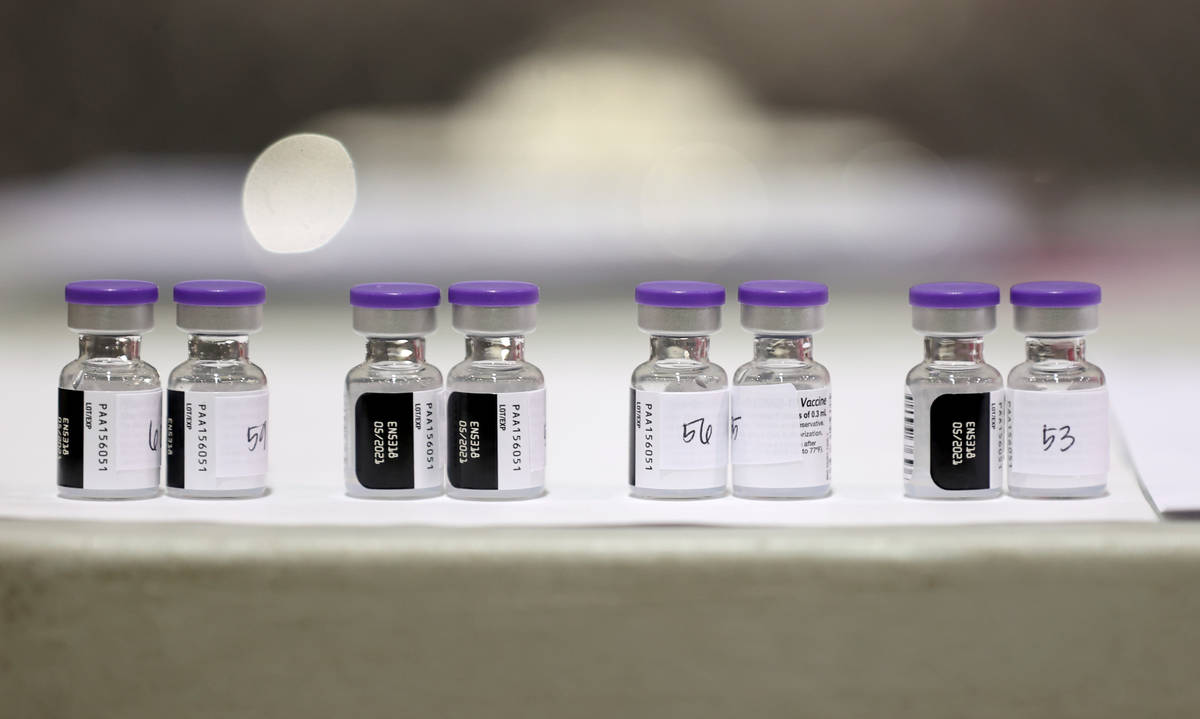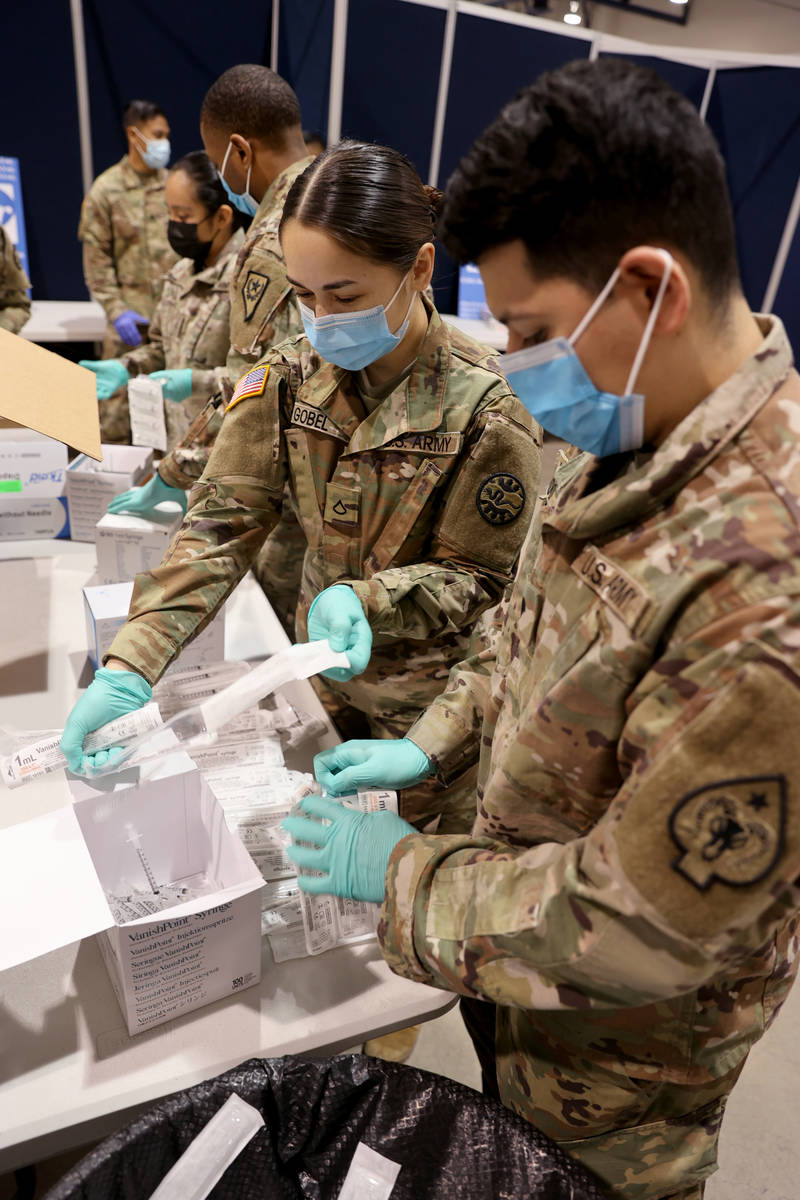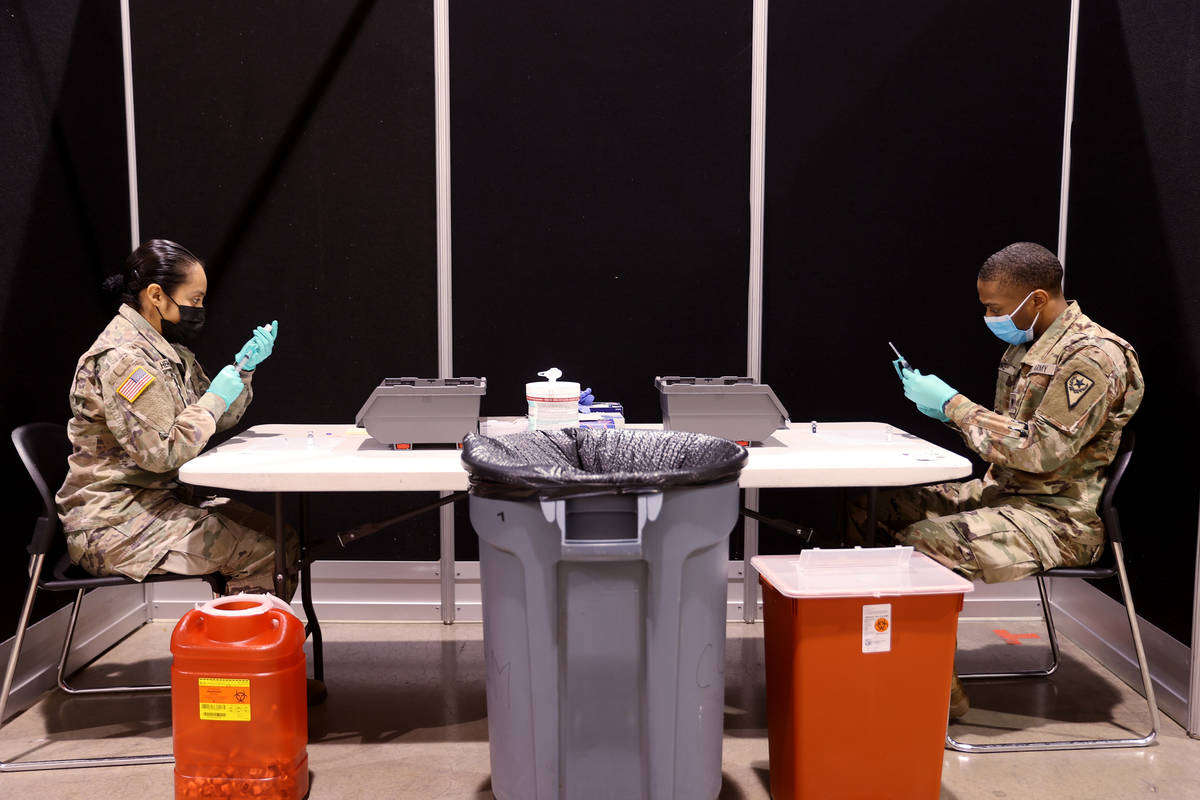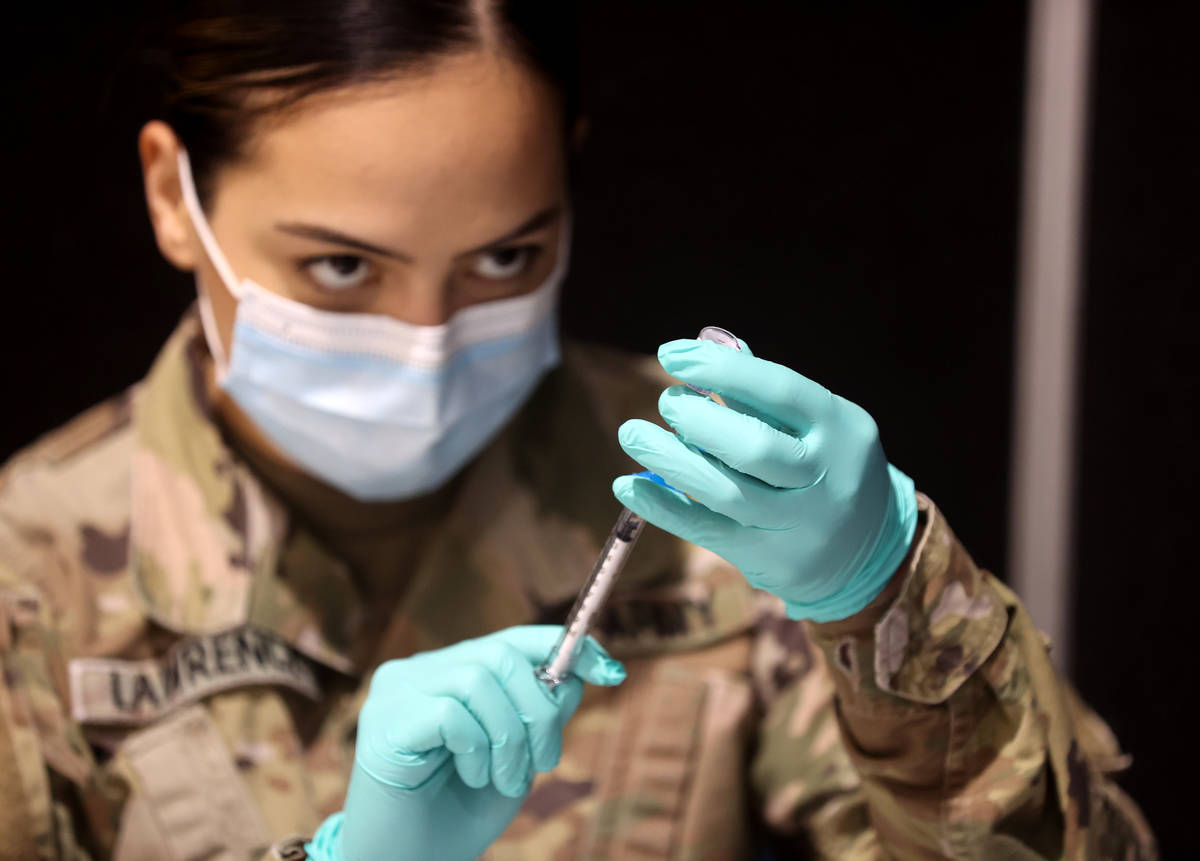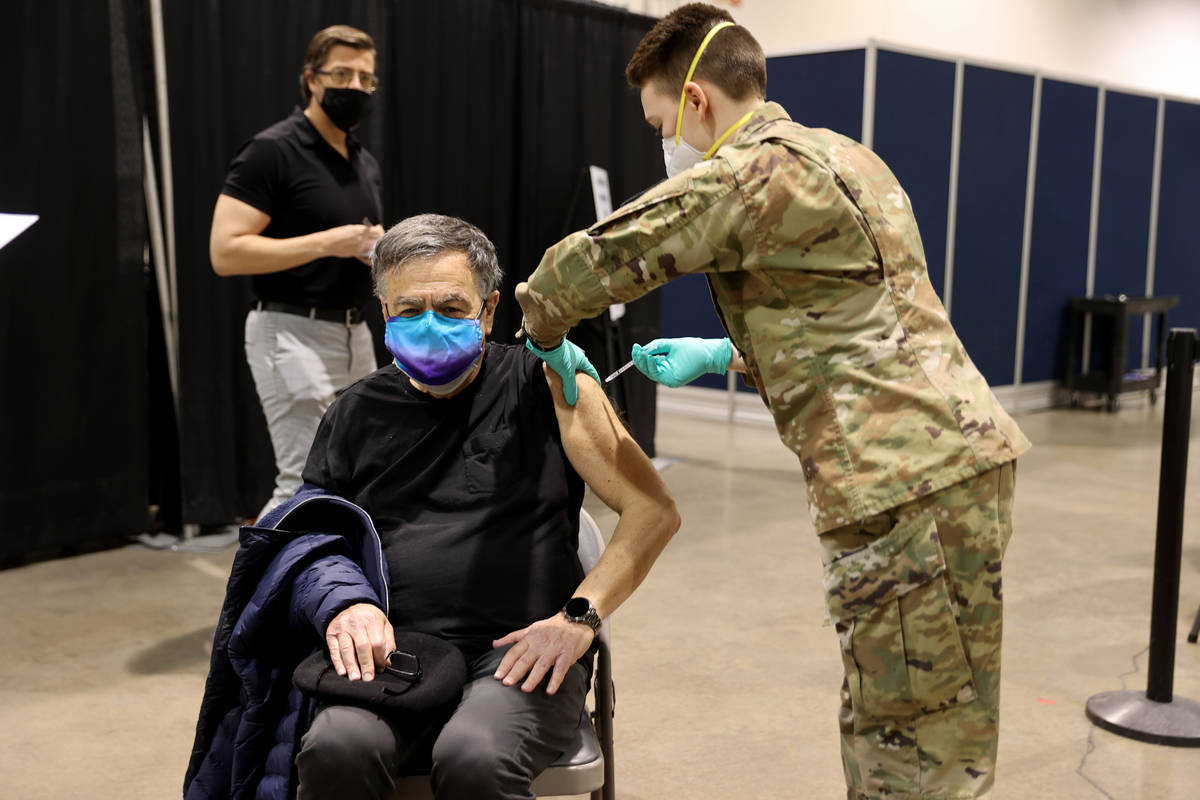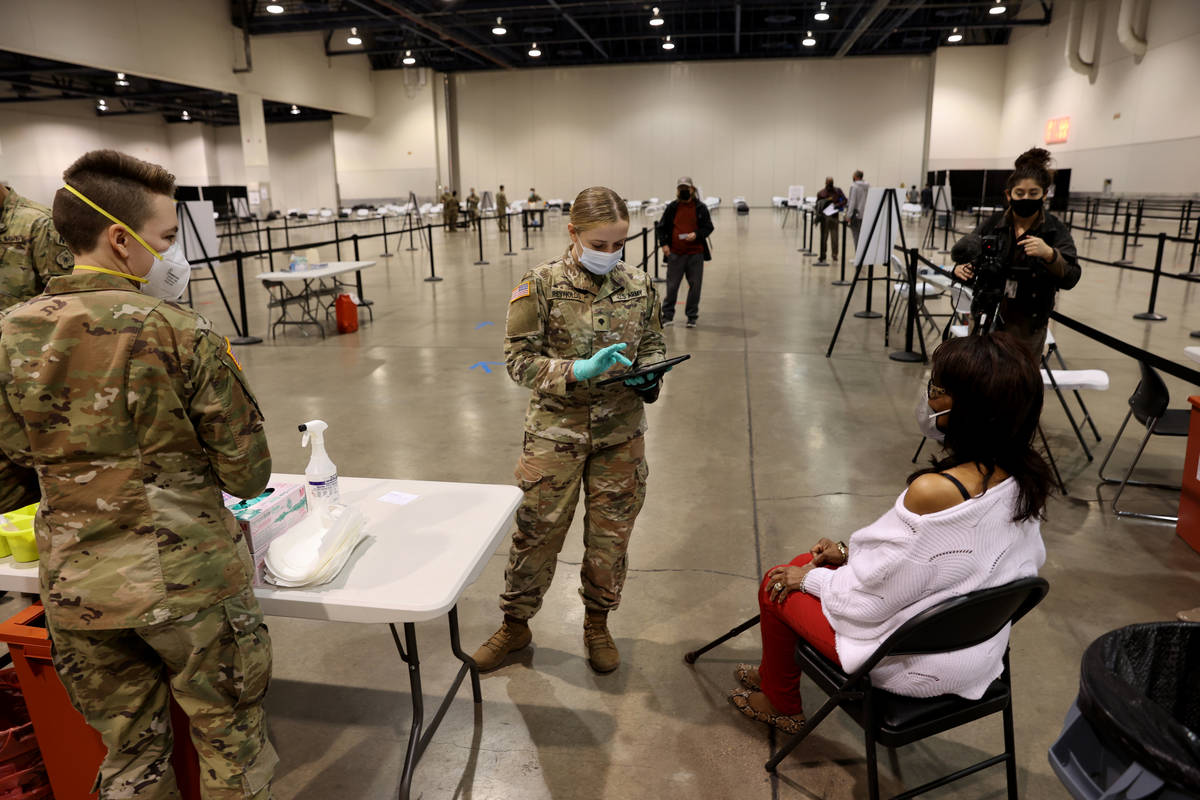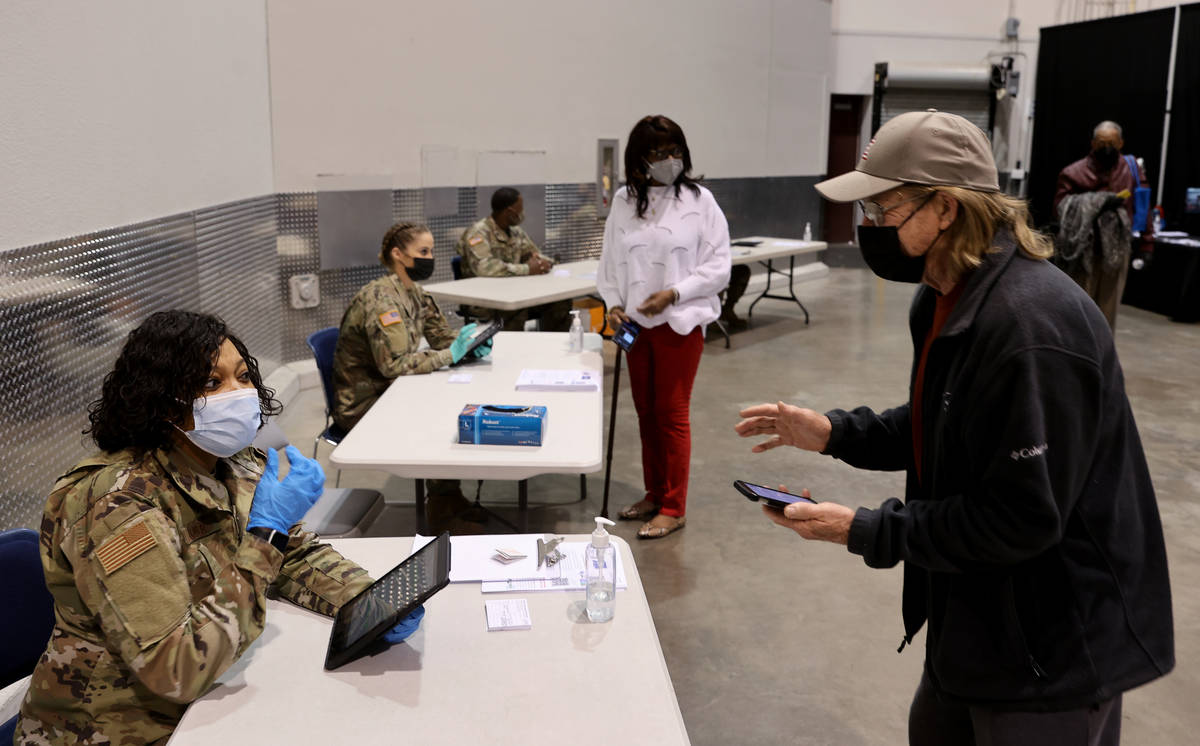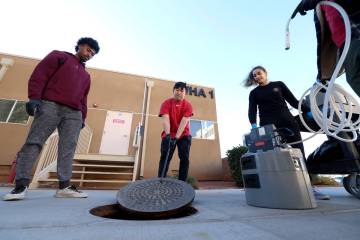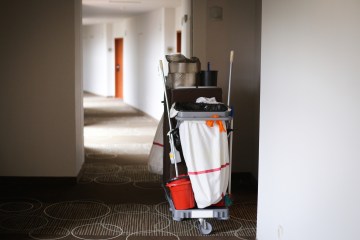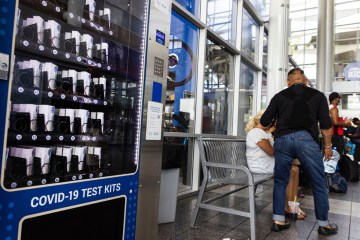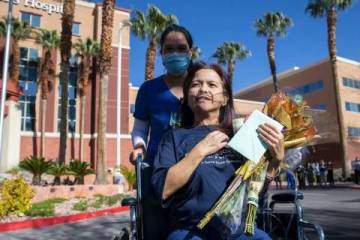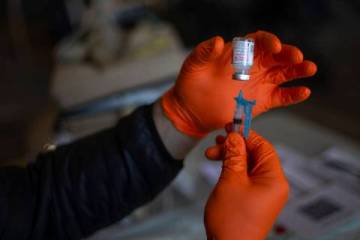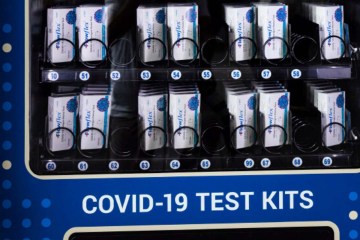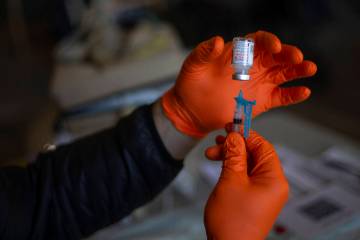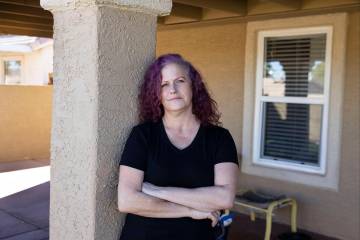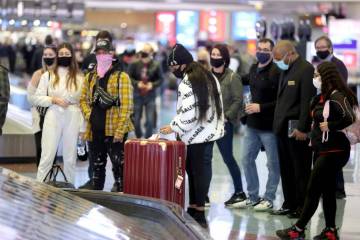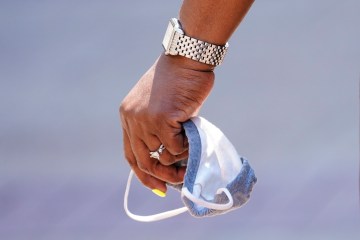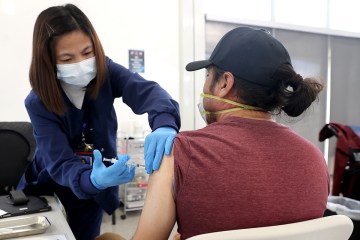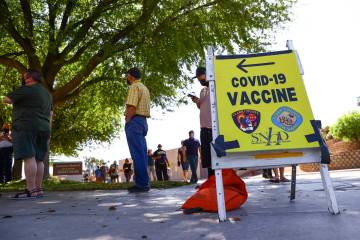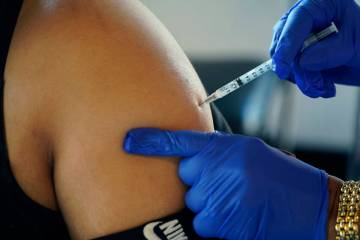Behind the scenes of delivering COVID vaccine to residents
The clock starts ticking when the car pulls up.
Time. It’s as precious as the cargo inside the vehicle.
Out comes a collapsible blue cart. In it goes a pair of same-colored coolers.
Digital data-loggers on each cart track the temperature, which must remain at 36 to 46 degrees Fahrenheit.
It feels almost that chilly outside Cashman Center on this Thursday morning. Palm trees sway in the breeze in direct contrast to the stillness of the staff before the arrival of what springs them into motion: 1,170 doses of the coronavirus vaccine.
The delivery is hurried into the building.
The countdown is on.
Two vaccines, two approaches
Today’s work began yesterday.
At exactly 3 p.m.
That’s when the vaccine was removed from a deep freeze to start thawing to its current state, where it’s good for 120 hours.
Inside Cashman’s Hall A, the cart is wheeled into a curtained-off area in the back of the auditorium.
“We call this ‘The Pharmacy,’ ” explains Travis Haldeman, an engineer with the Clark County Fire Department with a long frame and a cleanly shaved head.
Usually he drives a firetruck. Now he works an average of 14 hours a day, from 5 a.m. to 7 p.m., overseeing history: the dissemination of what may finally end this pandemic.
It all begins in earnest here, where about a dozen Army National Guard members in military fatigues are preparing to vaccinate more than 1,000 people in the coming hours.
This constitutes a light day: Upon opening on Jan. 14, the crew did 2,700 vaccinations during the busiest 24 hours of that first week.
And that’s just for starters.
“We predict this site will be able to do 4,000 or 5,000 very easily,” Haldeman observes.
For now, though, it’s time to administer what’s on hand.
Blue Pfizer signs adorn the makeshift walls. They’re not for decoration; they’re to remind workers what they’re prepping.
Readying the Pfizer vaccine shot requires a different set of steps than its Moderna counterpart, as the former needs to be diluted before being injected into a patient.
Each Thursday, state officials give the Southern Nevada Health Department the area’s allotment of vaccines and their type, which then are dispersed to sites across the region.
“For the smaller sites, it’s easier for them to use Moderna because it’s not as finicky,” Haldeman says. “For us, because we’re the largest site, they give us the Pfizer.
“Moderna is quite a bit easier to work with,” he adds. “You draw it right out of the vial. There’s not this other step. The temperatures can be in an easier range to manage, also.”
Not that he’s not complaining.
“Preferences are one thing,” Haldeman’s quick to note, “but as long as I have the vaccine, that’s all I really care about.”
Handle with care
The vials are arranged in small lots of two, their caps as bright as the hopes they portend.
The blue-topped ones carry the vaccine. Their pink-topped counterparts are full of the sodium-chloride solution used to dilute the vaccine.
A pair of soldiers arrange them neatly in gray bins on a table at the back of The Pharmacy. The vials are carefully numbered.
It takes 15 minutes for the vaccine to reach room temperature, at which time dilution can begin. The vaccine can last for two hours in this state.
When it’s time to mix the vaccine and sodium-chloride solution, the process is akin to transporting nitroglycerin across a bumpy road: steady as she goes.
With two workers sitting across from each other at six tables spread across the perimeter of the room, their fingers move with a slow, steady precision, like the measured tick of a clock’s hands.
“It’s necessary to be delicate,” explains Keith Davis, a medic specialist in the Army National Guard, who is among those preparing the vaccine. “You don’t want to shake it, drop it or anything like that because it’s going to mess up the actual compounds of the vaccine.”
Upon mixing the vaccine with the solution, Davis must turn the vial upside down 10 times slowly in a gesture similar to using a salt shaker.
“We can’t be too harsh with this stuff,” Haldeman says. “It’s not a mix or a swirl. It’s done very, very cleanly.”
As soon as the vaccine is ready, it’s placed in a bin labeled with the time of dilution.
It’s good for six hours at this point.
The process of loading the vaccine into a syringe for injection demands just as much care.
“You can’t flick it, can’t do that little flicky thing that you do with most medications that you draw up,” explains Katherine Deskins, an Army National Guard combat medic specialist. “It’s a very sensitive vaccine.”
Once in the syringe, the shot must be administered within two hours.
Soon, it’s time for the doors to open.
The clock ticks on.
Long hours, short lines
The best way to manage a crowd? Don’t let a crowd develop.
Each day, the vaccine distribution must flow in unison with the sometimes erratic arrival times of patients.
“Typically in the morning, we try to time it just right, so that right after we’re done pulling up that dose, we’ll get it into somebody’s arm,” Haldeman says.
“With the ebbs and flows of the day, with people showing up or not, or showing early or late for their appointment, we have to pay close attention to what the lines are doing so that we don’t over-draw,” he continues. “Our goal is to waste nothing.”
Soon people start trickling in.
Upon entry, their temperatures are checked, then a QR code sent to people confirmed to receive the vaccine is scanned. (If patients don’t have a QR code, they can be confirmed by name and date of birth).
Now people age 70 and older and front-line workers are eligible to be vaccinated, so driver’s licenses and work IDs are checked to ensure people qualify.
Each person then is issued a Centers for Disease Control and Prevention card with name and date of birth. It also lists the manufacturer of the vaccine they will receive, its lot number and expiration date, and a follow-up time for the next dose. (Vaccine recipients will be emailed a link to sign up for a date for the second dose).
Then, it’s on to one of eight vaccination stations arrayed around the hall.
Early on, traffic flows rapidly.
There has been a learning curve to get to this point, Deskins says, though it appears to have been largely flattened now.
“When we first opened, it seemed a little crowded,” she recalls, “but we thinned-out our process, reset, and we have a very smooth process now. People are in line for all of 30 to 45 minutes, I believe.”
As her day begins, Deskins is ready for her first patient, 71-year-old Barbara Moore.
“Which arm would you like to do today?” Deskins asks.
Moore chooses her left arm.
“Ready to get this over with, right?” Deskins queries, posing the mother-of-all rhetorical questions.
The wait is over.
“Relax your arm.”
Waiting to exhale
“Quick and easy, right?”
Deskins and her rhetorical questions.
As Moore gets to her feet, aided by a cane, it’s almost like you can see her spirits rise along with her limbs.
“The first thing I said to my husband was, ‘You know what? I feel so much more relaxed,’ ” Moore says from a white folding chair at the back of the room where patients wait a mandatory 15 minutes after being vaccinated to ensure they have no adverse reaction. “I was going through the anxiety, the panicking, not really going outside at all, not really meeting with people. I miss that.”
One by one they come, the line advancing briskly.
“It took me more time to get the appointment than it did to go through this whole thing,” notes Andy Perla, 76, a retired management consultant eager to travel again with his wife once COVID concerns abate.
It’s not as if the fog of the pandemic has suddenly been lifted by the prick of a needle. Nevertheless, a sense of relief is voiced by those who receive the shot.
“I’ve been isolated for quite a while,” says Mike Lucas, 70, a Marine Corps veteran who served in Vietnam before working for the Clark Country Fire Department for 26 years.
Lucas has had heart bypass surgery, which puts him at high risk for coronavirus complications.
“I’ve had a great life,” he says. “I guess this is what we got to do to continue it.”
Outside, motorized carts roam the parking lot, to and fro, picking up elderly patients to spare them the long walk. The drivers are greeted with smiles of relief.
Sandra Freeman, 81, gets a lift to the front door with her friend, Pat Gilbert.
“We all need the shot and we’re getting it,” she says upon exiting the cart. “We just have to get through it.”
Haldeman gets behind the wheel from time to time, as he does this morning.
“The two best jobs on this site are giving the vaccine and driving the golf carts for the people out there,” he contends.
It’s a bit past 9 a.m., and he is already hours into his shift.
Like the pandemic, Haldeman doesn’t know exactly when his work day will end. He just knows that it will.
“We’ve vaccinated over 25,000 people alone here at this site,” Haldeman notes. “Maybe that’s 25,000 lives we’ve saved or altered in a positive way.
“I’ve got three kids,” he continues, “and I think, eventually, they’ll do a book report on 2020. I think that will be a cool story for them to write. Their dad got to do something good.”
Contact Jason Bracelin at jbracelin@reviewjournal.com or 702-383-0476. Follow @JasonBracelin on Twitter and @jbracelin76 on Instagram.



